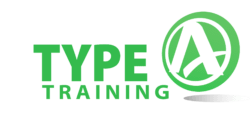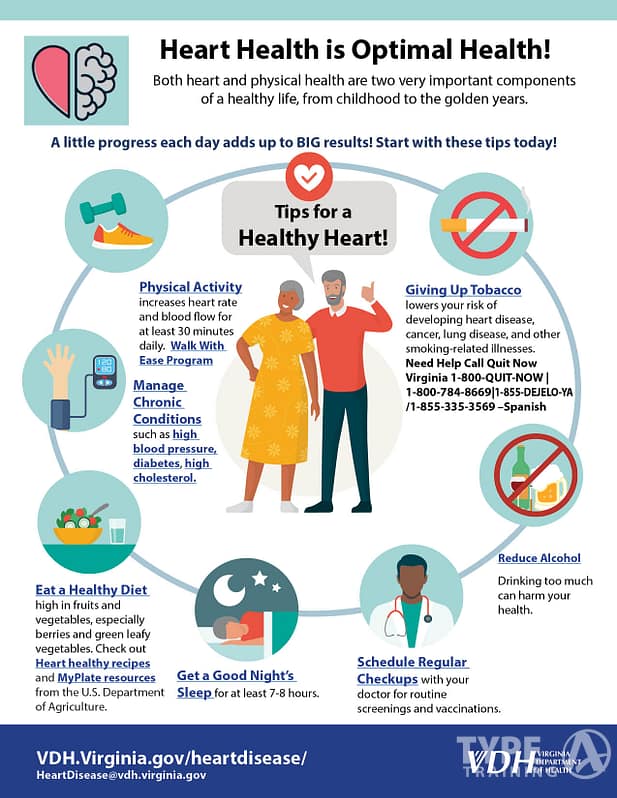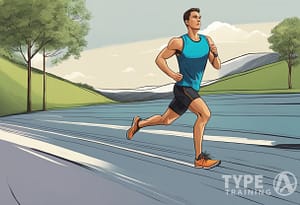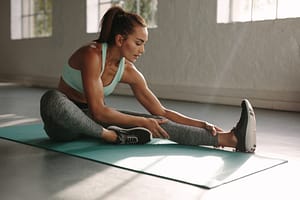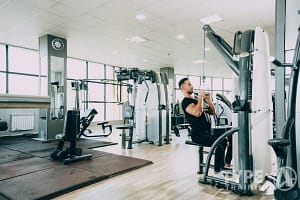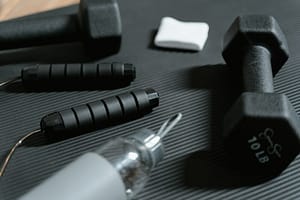Cardiovascular Exercise for Women Over 50 is an essential component of any fitness regimen. Engaging in regular cardiovascular exercise can help improve heart health, increase endurance, and promote overall well-being. However, it’s important to understand what cardiovascular exercise is and how it can benefit you.
Cardiovascular exercise, also known as cardio or aerobic exercise, is any physical activity that raises your heart rate and increases your breathing. This type of exercise can include activities such as brisk walking, jogging, cycling, swimming, and dancing. Cardiovascular exercise is essential for maintaining a healthy heart and lungs, as well as improving circulation and reducing the risk of chronic diseases such as diabetes, heart disease, and stroke.
As a woman over 50, you may face unique challenges when it comes to physical activity. Age-related changes in the body can impact your ability to exercise, and you may be managing chronic conditions that affect your mobility and overall health. However, with the right approach, you can still engage in cardiovascular exercise and reap the benefits. In the following sections, we’ll explore the best types of cardio programs for women over 50, how to monitor your heart rate during exercise, and how to incorporate cardio into your daily routine.
Key Takeaways
- Cardiovascular exercise is important for women over 50 to maintain a healthy heart and lungs and reduce the risk of chronic diseases.
- As you age, you may face unique challenges when it comes to physical activity, but with the right approach, you can still engage in cardio and reap the benefits.
- The best types of cardio programs for women over 50 include low-impact activities such as walking, cycling, and swimming, and it’s important to monitor your heart rate during exercise and incorporate cardio into your daily routine.
Understanding Cardiovascular Exercise
Cardiovascular exercise, also known as cardio or aerobic exercise, is any form of physical activity that increases your heart rate and breathing rate for an extended period of time. It is an essential component of a healthy lifestyle, especially for women over 50, as it helps to improve circulation, boost endurance, and maintain a healthy heart.
Benefits of Cardiovascular Exercise for Women Over 50
Cardiovascular Exercise for Women Over 50 has numerous benefits for women over 50, including:
- Improving heart health: Cardiovascular exercise helps to strengthen your heart and improve circulation, reducing the risk of heart disease, stroke, and other cardiovascular problems.
- Boosting endurance: Regular cardio exercise helps to improve your endurance and stamina, making it easier to perform daily activities and reducing fatigue.
- Managing weight: Cardio exercise is an effective way to burn calories and manage your weight, which is especially important for women over 50 who may experience a slower metabolism.
- Reducing stress: Cardiovascular exercise has been shown to reduce stress and anxiety levels, improving overall mental health and wellbeing.
Types of Cardiovascular Exercise
There are many different types of cardiovascular exercise, each with its own unique benefits and challenges. Some popular options for women over 50 include:
- Walking briskly: Walking is a low-impact form of cardio exercise that can be done almost anywhere. Brisk walking can help to improve cardiovascular health and burn calories.
- Running or jogging: Running and jogging are higher-impact forms of cardio exercise that can help to improve endurance and burn more calories than walking.
- Swimming: Swimming is a low-impact form of cardio exercise that is easy on the joints and can help to improve cardiovascular health and overall fitness.
- Cardio machines: Treadmills, ellipticals, and stationary bikes are popular cardio machines that can be used at home or in the gym. They provide a low-impact form of cardio exercise that can be customized to your fitness level.
Low, Medium, and High-Intensity Cardio Exercises
Cardio exercises can be categorized into low, medium, and high-intensity based on their impact on your heart rate. Here is a table that outlines some examples of each:
| Intensity Level | Exercise Examples |
|---|---|
| Low | Walking, leisurely cycling |
| Medium | Brisk walking, jogging, swimming |
| High | Running, cycling uphill, HIIT |
It’s important to choose a cardio exercise that is appropriate for your fitness level and health goals. Always consult with a cardiologist or healthcare professional before starting a new exercise routine, especially if you have any pre-existing medical conditions.
Benefits of Exercise for Women Over 50
As a woman over 50, regular cardiovascular exercise has numerous benefits that can help you maintain a healthy and active lifestyle. Here are some of the benefits you can expect:
Strengthens Heart Health
Cardiovascular exercise helps improve heart health by increasing blood flow and oxygen to the heart. This, in turn, helps reduce the risk of heart disease, stroke, and other cardiovascular diseases.
Reduces Risk of Chronic Diseases
Regular exercise can help prevent chronic diseases such as diabetes, high
Improves Mental Health
Exercise can be a great way to improve your mental health and reduce the risk of depression and anxiety. It stimulates the release of endorphins, which can help improve your mood and reduce stress.
Benefits of Exercise
| Strengths | Weaknesses |
|---|---|
| Improves heart health | Can be difficult to start and maintain |
| Reduces risk of chronic diseases | Can cause injury if not done properly |
| Improves mental health | Can be time-consuming |
| Helps maintain a healthy weight | Requires motivation and commitment |
| Promotes healthy aging process | Can be challenging for those with mobility issues |
| Reduces mortality risk | May require modifications for those with existing health conditions |
Recovery, Strength, Flexibility, Balance, Coordination, and Mobility
Cardiovascular exercise can also help improve recovery time, increase strength, flexibility, balance, coordination, and mobility. This can help you maintain an active lifestyle and perform daily activities with ease.
In conclusion, regular cardiovascular exercise has numerous benefits for women over 50. It can help improve heart health, reduce the risk of chronic diseases, improve mental health, promote healthy aging, and improve physical fitness. By incorporating regular exercise into your routine, you can improve your overall wellness and enjoy a healthy and active lifestyle.
Impact of Age on Physical Activity
As you age, physical activity becomes increasingly important for maintaining overall health and well-being. Women over 50 are particularly vulnerable to the negative effects of a sedentary lifestyle, including decreased strength, balance, mobility, and range of motion. However, with regular exercise, you can combat the aging process and maintain your physical abilities.
Guidelines for Physical Activity
The Centers for Disease Control and Prevention (CDC) recommends that adults aged 65 and older engage in at least 150 minutes of moderate-intensity aerobic activity, such as brisk walking, per week. Alternatively, you can engage in 75 minutes of vigorous-intensity aerobic activity, such as hiking or running, per week. Additionally, you should aim for at least two days a week of activities that strengthen your muscles.
Benefits of Physical Activity
Regular physical activity has numerous benefits for women over 50. It can help improve cardiovascular health, reduce the risk of chronic diseases such as diabetes and osteoporosis, and improve mental health and cognitive function. Additionally, it can help maintain healthy joints and prevent falls by improving strength, balance, and mobility.
Considerations for Menopause
Menopause can have a significant impact on physical activity for women over 50. Hormonal changes can lead to decreased bone density and increased risk of osteoporosis, making weight-bearing exercises particularly important. Additionally, hot flashes and other symptoms may make certain types of exercise uncomfortable. Consider speaking with a personal trainer, yoga instructor, or Pilates instructor to develop a workout plan that takes these considerations into account.
Remember, it’s never too late to start incorporating physical activity into your routine. Seek help if needed and start slow, gradually increasing the intensity and duration of your workouts. By doing so, you can maintain your physical abilities and improve your overall health and well-being.
Best Types of Cardio Programs for Women Over 50
When it comes to cardiovascular exercise, there are many options available for women over 50. Here are some of the best types of cardio programs that you should consider:
Low-Impact Workouts
Low-impact workouts are great for women over 50 because they are easier on the joints than high-impact workouts. Some examples of low-impact workouts include walking, biking, dancing, and yoga. These workouts can help you burn calories and improve your cardiovascular health without putting too much stress on your body.
High-Intensity Interval Training (HIIT)
High-intensity interval training (HIIT) is a great way to get an intense cardio workout in a short amount of time. HIIT involves alternating between periods of high-intensity exercise and periods of rest or low-intensity exercise. Some examples of HIIT workouts include sprint intervals, jump rope intervals, and circuit training.
No matter what type of cardio program you choose, it’s important to start slowly and gradually increase the intensity and duration of your workouts. This will help you avoid injury and ensure that you get the most out of your exercise program. Remember to consult with your doctor before starting any new exercise program, especially if you have any health concerns or medical conditions.
Managing Chronic Conditions with Cardio
If you’re a woman over 50 with chronic conditions such as diabetes, arthritis, heart disease, stroke, high
Benefits of Cardiovascular Exercise
Cardiovascular exercise, also known as aerobic exercise, involves increasing your heart rate and breathing rate for an extended period. This type of exercise can help you:
- Lower your
blood pressure - Reduce your risk of heart disease and stroke
- Improve your blood sugar control
- Increase your energy levels
- Manage your weight
- Improve your mood and mental health
Low, Medium, and High-Risk Exercise
Before starting any exercise program, it’s important to consult with your doctor to determine what level of exercise is safe for you. Based on your health status and risk factors, your doctor may recommend low, medium, or high-risk exercise.
Here’s a table to help you understand the different levels of exercise:
| Risk Level | Description |
|---|---|
| Low | Activities that are easy on your joints and heart, such as walking, swimming, or cycling at a slow pace. |
| Medium | Activities that increase your heart rate and breathing rate, such as brisk walking, water aerobics, or cycling at a moderate pace. |
| High | Activities that are intense and may be challenging for your heart, such as running, jogging, or high-intensity interval training. |
Tips for Safe Exercise
Here are some tips to help you exercise safely:
- Start slowly and gradually increase your intensity and duration.
- Warm-up before exercising and cool down afterward.
- Stay hydrated by drinking water before, during, and after exercise.
- Wear comfortable, supportive
shoes and clothing. - Monitor your heart rate and breathing rate during exercise.
- Avoid exercising in extreme temperatures or weather conditions.
- Listen to your body and stop exercising if you experience pain, dizziness, or shortness of breath.
In summary, incorporating cardiovascular exercise into your routine can help you manage your chronic conditions and improve your overall health. Always consult with your doctor before starting any exercise program and follow their recommendations for safe exercise.
How to Monitor Your Heart Rate During Exercise
When it comes to cardiovascular exercise, monitoring your heart rate is essential to ensure that you are working out at the right intensity. This is especially important for women over 50, as the heart becomes less efficient with age. Here are three ways to monitor your heart rate during exercise:
Method 1: Check Your Pulse
The most basic way to monitor your heart rate during exercise is to check your pulse. According to Harvard Health, you can check your pulse using just your fingers, either at the wrist or the side of the neck. To check your pulse at the wrist, lightly press the index and middle fingers of one hand on the opposite wrist, just below the base of the thumb. To check your pulse at the neck, lightly press the side of your neck, just below your jawbone. Count the number of beats for 15 seconds and then multiply by four to get your heart rate in beats per minute (bpm).
Method 2: Use a Heart Rate Monitor
A heart rate monitor is a wearable device that tracks your heart rate during exercise. It can be worn on the wrist like a watch or strapped around the chest. According to Healthline, heart rate monitors are more accurate than checking your pulse manually. They also allow you to track your heart rate continuously throughout your workout. Some heart rate monitors even come with built-in GPS, so you can track your distance and speed as well.
Method 3: Use the Talk Test
The talk test is a simple way to monitor your heart rate during exercise without any equipment. According to the American Heart Association, if you can carry on a conversation during exercise without feeling out of breath, you are likely working out at a moderate intensity. If you can only say a few words before needing to catch your breath, you are likely working out at a vigorous intensity.
Heart Rate Zones
To ensure that you are working out at the right intensity, it’s important to know your heart rate zones. According to Verywell Fit, there are five heart rate zones:
| Zone | % of Max Heart Rate | Description |
|---|---|---|
| Zone 1 | 50-60% | Very light exercise |
| Zone 2 | 60-70% | Light exercise |
| Zone 3 | 70-80% | Moderate exercise |
| Zone 4 | 80-90% | Vigorous exercise |
| Zone 5 | 90-100% | Maximum effort |
To determine your max heart rate, subtract your age from 220. For example, if you are 55 years old, your max heart rate would be 165 bpm (220 – 55). To work out at a moderate intensity, aim for 70-80% of your max heart rate. To work out at a vigorous intensity, aim for 80-90% of your max heart rate.
Incorporating Cardio into Daily Routines
If you’re a woman over 50, you know how important it is to stay active. Incorporating cardio into your daily routine can help you maintain a healthy weight, reduce your risk of chronic diseases, and improve your overall quality of life. Here are some tips to help you get started:
Find Activities You Enjoy
The most important thing is to find activities that you enjoy. This will make it easier to stick to your routine and stay motivated. Walking, running, biking, swimming, and hiking are all great options. If you prefer to stay indoors, you can try using a treadmill, elliptical machine, or stationary bike. Group fitness classes, such as Zumba or aerobics, can also be a fun way to get your heart rate up.
Make Time for Movement
It’s recommended that adults get at least 150 minutes of moderate-intensity physical activity per week. This can be broken down into 30 minutes of activity, five days a week. However, if you’re just starting out, it’s okay to start with shorter sessions and gradually work your way up. Try to make movement a part of your daily routine. For example, you can take a brisk walk after dinner or do a few minutes of jumping jacks during commercial breaks.
Mix It Up
Variety is key when it comes to cardio. Doing the same activity every day can get boring and may lead to burnout. Try to mix it up by incorporating different types of cardio into your routine. For example, you can do a combination of walking, running, and biking throughout the week. You can also try adding in some high-intensity interval training (HIIT) or circuit training to challenge your body in new ways.
Remember, it’s important to listen to your body and seek help from a personal trainer, yoga instructor, or Pilates instructor if needed. They can help you create a safe and effective workout routine that meets your individual needs and goals. With consistency and dedication, you can incorporate cardio into your daily routine and reap the many benefits of regular physical activity.
Frequently Asked Questions
What are some effective cardio exercises for women over 50?
There are many effective cardio exercises that women over 50 can incorporate into their routine. Walking, cycling, swimming, and dancing are all great options that are low-impact and easy on the joints. If you’re looking for something more intense, you can try jogging, running, or using an elliptical machine. Remember to start slowly and build up your endurance over time.
How often should women over 50 incorporate cardio into their exercise routine?
The American Heart Association recommends that adults get at least 150 minutes of moderate-intensity aerobic exercise or 75 minutes of vigorous-intensity aerobic exercise per week. This breaks down to about 30 minutes of exercise per day, five days a week. However, it’s important to listen to your body and adjust your routine as needed. If you’re just starting out, you may want to start with shorter sessions and gradually work your way up.
What are some low-impact cardio options for women over 50?
Low-impact cardio options are great for women over 50 who want to avoid putting too much stress on their joints. Walking, cycling, and swimming are all great options. You can also try using an elliptical machine or doing low-impact aerobics. Remember to warm up properly before exercising and cool down afterward to prevent injury.
Can women over 50 benefit from high-intensity interval training (HIIT) for cardio?
HIIT can be a great option for women over 50 who want to challenge themselves and improve their cardiovascular fitness. However, it’s important to start slowly and gradually increase the intensity and duration of your workouts. HIIT can be intense, so it’s important to listen to your body and rest when needed. Talk to your doctor before starting a new exercise program, especially if you have any health concerns.
What are some safety considerations for women over 50 when doing cardio?
It’s important to listen to your body and not push yourself too hard when doing cardio. Start slowly and gradually increase the intensity and duration of your workouts. Make sure to warm up properly before exercising and cool down afterward to prevent injury. If you have any health concerns, talk to your doctor before starting a new exercise program.
How can women over 50 track their progress with cardio exercise?
Tracking your progress can help you stay motivated and see how far you’ve come. You can use a fitness tracker or app to track your steps, distance, and calories burned. You can also keep a journal or use a spreadsheet to track your workouts and progress over time. Remember to celebrate your successes and don’t get discouraged if you have setbacks. Consistency is key when it comes to cardio exercise.
